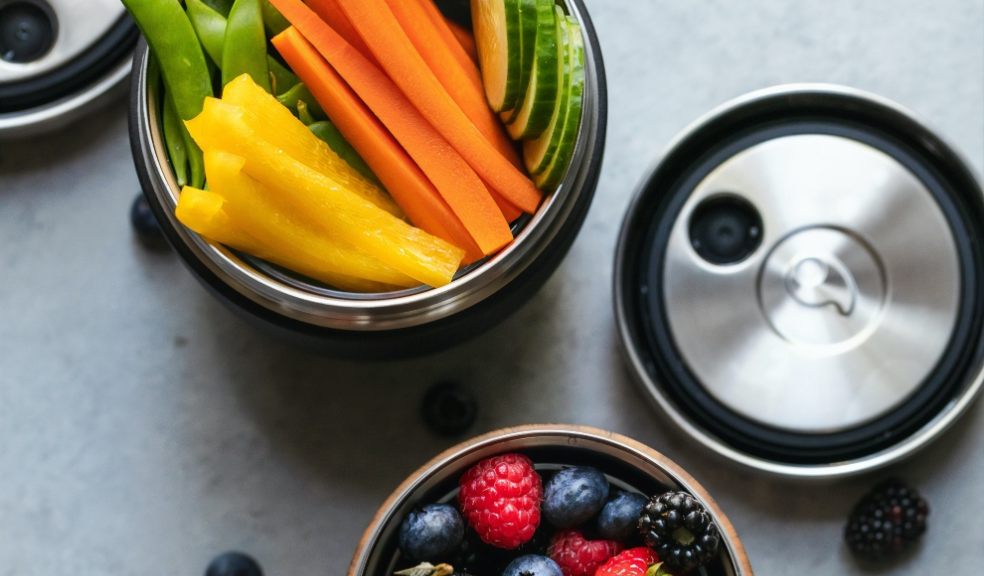
Snacking at home - top tips
With more people staying at home during the working day, due to COVID-19, the temptation to reach into the snack cupboard and graze on less healthy food, such as crisps, biscuits, chocolate, sweets and cake, may be high. Regularly snacking on foods that are high in energy (calories), fat, sugar and salt can increase your risk of developing heart disease and type 2 diabetes.
Here’s some simple tips for making healthier snacking choices at home.
Read the labels
When buying packaged snack foods, check the nutrition label on the pack and aim to choose foods that have:
-
6g or more of fibre per 100g
-
5g or less of total sugars per 100g
-
3g or less of fat per 100g
-
1.5g or less of saturated fat (saturates) per 100g
- 0.35g or less of salt per 100g
As the weather gets cooler, you could start your day with a comforting bowl of warm porridge. Rather than adding sugar, honey, jam or syrup to your porridge, you could try adding fruit, such as berries, chopped apple or sliced banana and a sprinkling of chopped nuts, seeds or cinnamon.
The Do’s of Snacking
-
Remove the temptation to snack on foods that are high in fat, sugar and salt by keeping them out of your home. Empty your cupboards of chocolate, crisps, biscuits, cakes and sugary drinks and replace them with healthier options
-
Include a variety of different snack foods in your diet. Choose a range of healthy foods to snack on, such as portions of fruit, raw vegetable sticks, low-fat dips and spreads, wholemeal toast, unsalted nuts, low-fat yoghurts, 30g portions of reduced fat cheese and wholegrain crackers or oatcakes
-
Choose snacks that contain at least one of your 5 a day. Fill your fruit bowl with your favourite fruits and keep plenty of veg in the fridge
-
Choose a portion of fresh fruit to snack on, such as an apple, banana, orange or a handful of strawberries, raspberries, blueberries or grapes
-
Choose vegetable sticks, such as carrot, celery, peppers, cucumber or sugar snap peas with low-fat dips, such as hummous
-
Limit fruit juices to no more than 150ml a day as they can be high in sugar
-
Choose snacks that are high in fibre. Wholegrain foods, such as wholemeal toast and crackers, as well as fruit and vegetables, are high in fibre, which is good for keeping your heart healthy. Choose packaged snack foods that contain at least 6g of fibre per 100g
- Make your own popcorn at home, without adding salt or sugary toppings. This can be a healthier snack for all the family and a fun one to involve the kids with
The Don'ts of Snacking
- Avoid grazing
When you are distracted with work or the TV, or when you are feeling bored, it can be tempting to graze in the absence of hunger. If you regularly graze, try setting specific times when you will allow yourself to eat a healthy snack. For example, you could set an alarm for 10:00am and 3:00pm to enjoy a healthy snack in between your meals.
- Try to avoid overdoing it
Less healthy snacks, such as crisps, chocolate bars, sweets, biscuits, and cakes.
Avoid cheap supermarket offers on less healthy food options, as they can tempt you into buying (and eating) more than you need.
- Occasional treats
For an occasional treat, choose foods that are individually wrapped, such as a small chocolate bar or a small packet of crisps, rather than larger sharing packs.
- Limit less healthy snacks
Try no more than two or three portions each week. Portion (serving) size is often given at the back of packaging and this information can help you to limit the amount you are eating.













